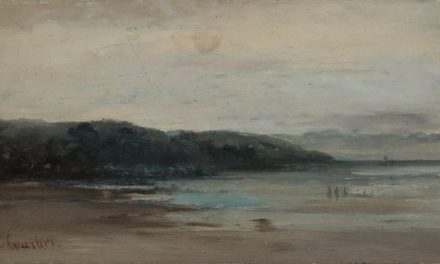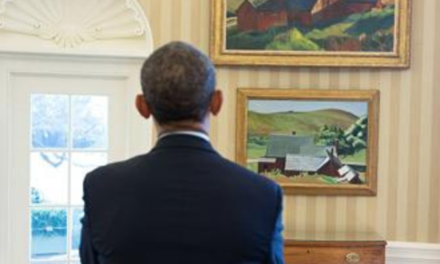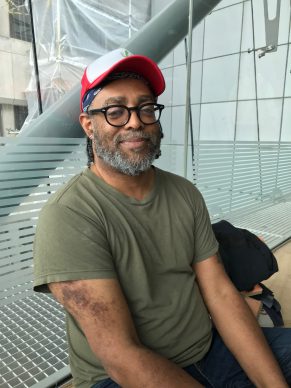Ebullient artist
It has to be said: Neil Beloufa (born in 1985) is one of today’s most promising artists. The ever-ebullient French artist, represented by Kamel Mennour in Paris, François Ghebaly in Los Angeles and Mendes Wood in Sao Paulo, has had exhibitions at Moma in New York (see the report on the subject), at the ICA in London, at the Palais de Tokyo in Paris (see the report on the subject) and at the 2019 Venice Biennale.

Neil Beloufa@ Palais de Tokyo
The state of our society
The most relevant thing about him are his complex installations made up of constructed scenes featuring films he makes himself. The artworks can often appear to be chaotic, even cacophonic, but they ultimately act as a reflection of what’s going on in the world today. Because Beloufa’s chief virtue is that he has a keen eye for the state of our society.
Disneyland of information
Describing his exhibition at the Palais de Tokyo he said: “we have created a Disneyland of information”. Beloufa often has the smart idea of giving movement to the majority of his installations. Not long ago, the best modern artists were obsessed with the illusion of a moving vision of the artwork (futurism, cubism). Today, it is the artwork that moves around us. “I think the way we represent the world today is extremely harmful. Everything is presented in a very Manichean way.”
The crisis
So as usual Neil shows himself to be a characteristically astute observer of the crisis we’re currently experiencing. Taking refuge on a farm because, as he explains, he has two young children, he was struggling with a fairly poor internet connection during the interview, which took place a few days ago.
Proliferation of art platforms
He says: “I’ve been absolutely terrified by the fact that everyone’s been trying to create online platforms reducing art to just its content or transposing art in real life onto the internet. We are currently witnessing, across all areas, a concentration of supply around a few powerful distributors, following the Netflix model in the film world. We must try very hard to avoid this.”
We understand him to be alluding to the powerful international mega-galleries, but also to the proliferation of platforms ran by large art operators like Sotheby’s that bring together a range of offerings (with their Sotheby’s Gallery Network, see the report about Sotheby’s new strategy), in addition perhaps to Zwirner or Perrotin, who are hosting works from young galleries on their website in a different way during this difficult time.
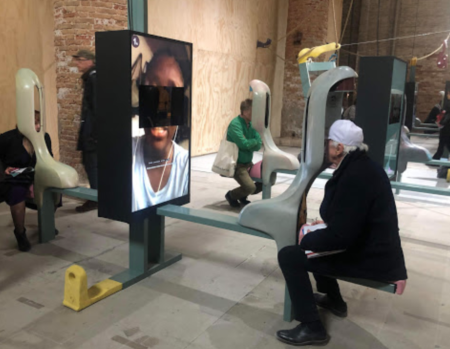
Neil Beloufa @ Venice Biennale
To find a new system
“I’ve therefore tried to find a new system, one that allows the internet to be a medium as opposed to a propaganda tool. I’ve tried to develop an alternative together with my artist friends and people from my studio.”He’s created an evolving shared platform with financial backing from the Fondation d’entreprise Ricard, among others, where you can watch a film he’s made but you can also buy origami pieces for 10 euros or take part in a competition and win a bronze. The project has been designed to grow over time and involve the participation of more and more artists.
Game or art?
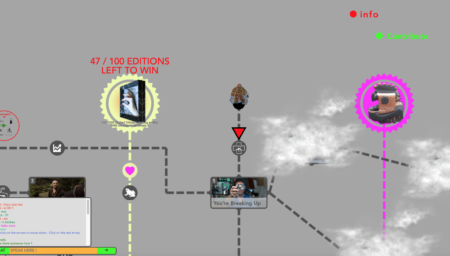
Screen Talk by Neil Beloufa
“It’s a test run. I don’t know how to define it yet, somewhere between a game and a work of art. It features, among other things, a comedy I made in 2014 during the H1N1 epidemic, which I didn’t show much at the time. Back then we were imagining everyone in quarantine and families talking over Skype.”
He concludes:
“The conditions of isolation under which we’re living are a prototype for the society towards which we’re heading. How can we adapt?”
Support independent news on art.
Your contribution : Make a monthly commitment to support JB Reports or a one off contribution as and when you feel like it. Choose the option that suits you best.
Need to cancel a recurring donation? Please go here.
The donation is considered to be a subscription for a fee set by the donor and for a duration also set by the donor.

